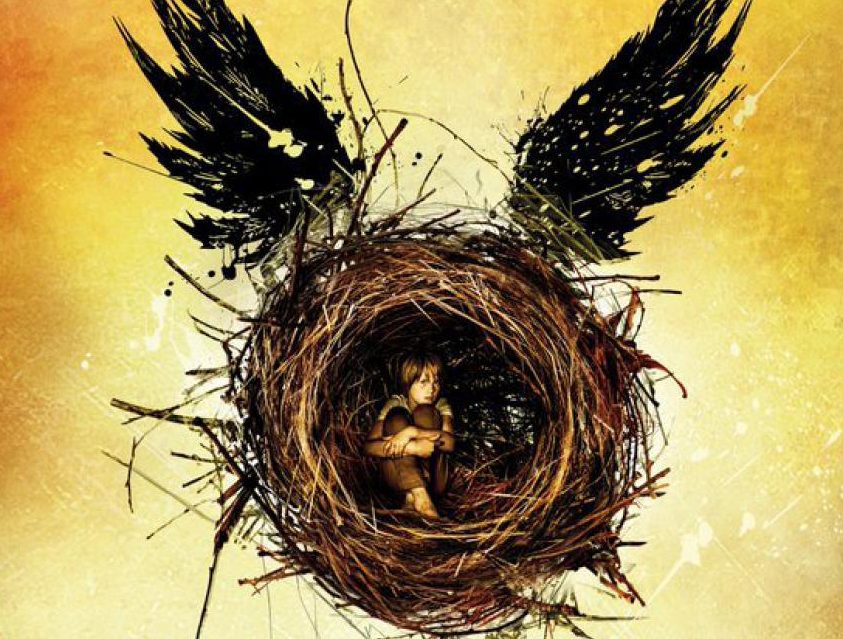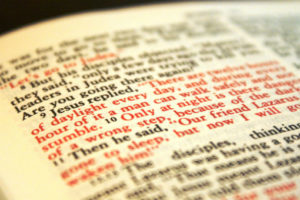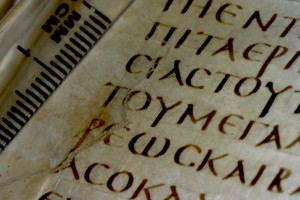Okay, so I have not had nearly enough conversations about The Cursed Child. I really really need to vent about this story but I’ve just not had any opportunities. So instead of bottling it all up, I need to get a few more things off my chest about this story.
A few weeks ago I gave my initial thoughts on the script (you can read that post here). Since writing that post I’ve had a few more weeks to think about it and listen to the perspectives of others in a few podcasts. I really appreciated four of them in particular that I’d like to share with you all. The first two are about the actual play itself. One of the contributors to the main Harry Potter podcast, known as Mugglecast, went to see the play back in June for the very first rehearsal performance. So he gave some insights into the ambitious nature of the play and how exciting it is to watch (though he hated the story). He offered an initial spoiler-free version and then a more spoiler filled one.
Mugglecast Episode #294 The Cursed Child (SPOILER-FREE review)
Mugglecast Episode #295 Wormtaily (SPOILER review)
The great thing about these podcasts is that you can really put together how the script comes to life in many ways. Then, following the publication of the script, Mugglecast revisited The Cursed Child, but with specific reference to the script itself.
Mugglecast Episode #298 The Cursed Child, Part I
This episode is just on Part I. The episode on Part II should be out shortly, which should be great as well. Then, in my favorite Harry Potter podcast, Mugglenet Academia, a more academically-focused engagement with the story is provided.
Mugglenet Academia Lesson #48: “Cursed Child: Praise, Criticism, and Pigeons”
In each of these four podcasts I found some great perspectives on why the book really doesn’t cut it, which further vindicated my view that The Cursed Child should not be considered “the eighth story.” In my earlier post I was really concerned to #KeeptheSecrets, but now that there are so many podcasts, blogs, and reddit pages full of discussion on every detail of the story, I feel like it’s now time for me to proceed. In what follows I offer a few disjointed thoughts.
In my last post, I talked about how Harry is not really the protagonist of the story and he’s also not really the same character from the seven books. Well, I want to underscore this point by saying that the failed relationship between Harry and Albus (Harry’s son) seems so forced and unearned and unlikely. As I was reading the story I just could not buy into this element of the story, and of course the whole plot is based upon their tension. I just couldn’t get past it.
I was also very much irritated by the fact that Harry’s scar started to cause him pain. This irks me for several reasons. First, the seventh book (i.e., the end of the canon) concludes with this beautiful line: “The scar had not pained Harry for nineteen years. All was well” (Deathly Hallows, 759). To have Harry’s scar to feel pain again literally just a couple of years later makes this line from Deathly Hallows feel like complete rubbish. And, frankly, it’s just entirely arbitrary to just make the scar hurt again. And it’s not just arbitrary, it also conflicts with what I see as being a central theme in the narrative: in Harry’s death, he defeated death (aka Voldemort), and death no longer has its sting (cf. 1 Cor. 15.55). That bit of death inside Harry that pained him for years, that’s gone. I actually wrote an essay on this issue for Ravenclaw Reader (you can buy it here on Amazon), so naturally I was really irked by this feature of The Cursed Child. In addition to these things, Harry feeling pain in his scar at this point in his life also makes zero sense. Since Harry’s scar is causing him pain because a bit of Voldemort is still around by virtue of his child Delphi—I know, hold the phone right? Soooooooo many problems with this. (A) Voldemort was too selfish to choose to “live forever” through offspring, and (B) Uhm, well, anatomy and such—it makes no sense that the scar’s pain would dissipate and then reappear when it did. Surely it would have never ceased to pain him. Oh the frustrations that I feel.
Now, I’d I like to comment on the relationship between Albus and Scorpius (Draco’s son). The whole way through the script I suspected that their friendship was going to turn into something romantic. I’m not alone in this; you can find all sorts of stuff on the internet about the clues and hints all along the way if you’re interested. I suspected this, and I was genuinely surprised when it didn’t happen. In fact, I’d say this is the real plot twist of The Cursed Child. In one of the podcasts I mentioned above, a contributor to the podcast lamented the fact that Rowling didn’t pull the trigger on this one. While I do not intend to comment on whether or not Rowling should have given Albus and Scorpius a romantic conclusion, I do want to comment on the fact that I do think there is a suggestion within the narrative itself that they will end up together in the end. Perhaps Rowling pulled away out of fear of backlash from more conservative readers. I do suspect that one day we’ll find out on Pottermore or one of Rowling’s tweets that they do end up together in the end, similar to how Rowling told us after the series was complete that Dumbledore was gay. The main reason why I think the narrative wants us to ship Albus and Scorpius is not merely because of the multiple hints that their friendship is at least suggestive. I would say that those hints are there and worth noting. But this isn’t what compels me to interpret the text this way. At the end of the story we hear that both Albus and Scorpius have hetero-normative romantic interests. These new interests come out of nowhere and seem a bit unwarranted. But in the context of the story they seem to be pointing to their eventual romantic relationship. I say this because in their time traveling adventures they saw alternate worlds in which slight adjustments to the past altered a famous love story, namely, that of Ron and Hermione. In one reality Hermione is single, and Ron marries Padma. In another reality they are both single, but realize they really do love each other and then, just like a typical love story, they get their souls sucked out together by Dementors (totes adorbs). But all of this highlights that they were meant to be together, and that certain events in their past that would seem to undermine their potential (such as Hermione dancing with Krum at the ball), ultimately led to them being together. In the same way, I think that this focus on alternate realities mixed with the question of romantic fatalism calls into question whether we’ve not been watching something similar play out in a budding relationship, in this instance between Albus and Scorpius. I think the building-blocks are there, and I fully expect that we will get confirmation on this before too long.
Finally, I want to comment on the fact that The Cursed Child revisits Goblet of Fire so much (trying to save Cedric Diggory, reliving the Triwizard Tournament, etc). That book is towards the bottom of most people’s favorite’s list (though, of course, plenty of Goblet lovers exist). Rowling herself stated that it was her least favorite book because it was the one that she felt was the most rushed. But my objection to this is not because I dislike Goblet (I actually think it’s great, though more like middle of the pack). Rather, I dislike the way it seems to be contributing to an alternate structure to the stories. With the seven novels the structure of the series is a ring composition with book 4 functioning as the center. Below I’ve written out the ring in chiastic structure, though it is preferable if you can conceive of this as a ring since books one and seven then bleed into each other in many ways (providing obvious closure and structure to the canon).
Canonical Order & Shape of the Seven Novels
1
…..2
……….3
……………4
……….5
…..6
7
But with The Cursed Child, now the pattern has to be re-configured. And the emphasis on the fourth book seems to give us guidance on how to imagine the new structure. It seems that we are supposed to conceive of the new structure like this:
New Order with The Cursed Child
1
…….2
…………3
……………..4
5
…….6
…………7
……………..8
Because of its emphasis on the fourth book, “the eighth story” seems to be the obvious counterpart to it. But if four and eight are meant to correspond structurally, there’s no way that three and seven correspond, or two and six, or one and five. This order makes absolutely no sense. However, without diving into all the details, when we look back on the order and shape of the seven novels, we can make several obvious connections between the proposed books. For example, in one and seven you’ve got the death of death (aka Voldemort) through the loving self-sacrifice of Lily and Harry respectively, in books two and six you have intriguing magical books (Tom Riddle’s diary and the potions textbook of the Half-Blood Prince), and in books three and five you have the “Black” books (where Sirius and his family play major roles). Then in the very middle you’ve got the pivot book around which the whole story hinges. And there, right smack dab in the center, is where Voldemort regains his power and we see the incarnation of death itself. These are just some quick and simple observations to point to the coherence and shape of the seven-part canon over against the new order created by “the eighth story.”
Anyways, these are just some of my thoughts. Now tell me what you thought of The Cursed Child!





3 Comments
Leave your reply.